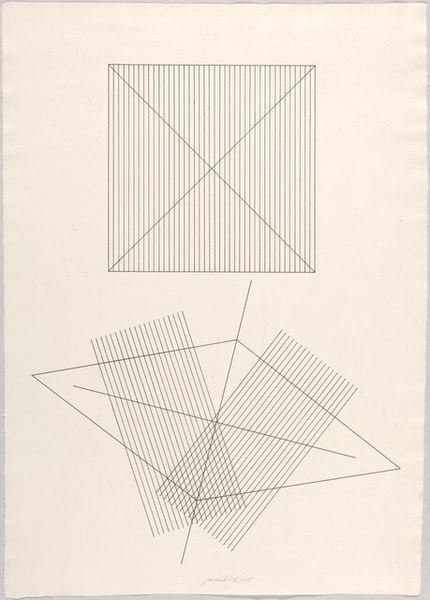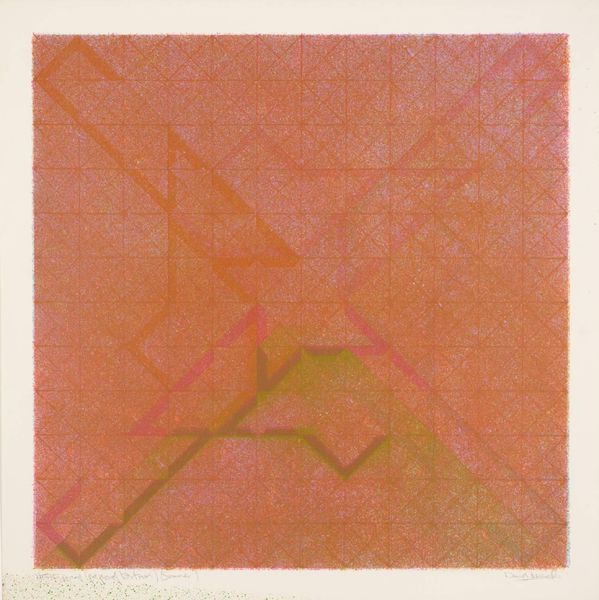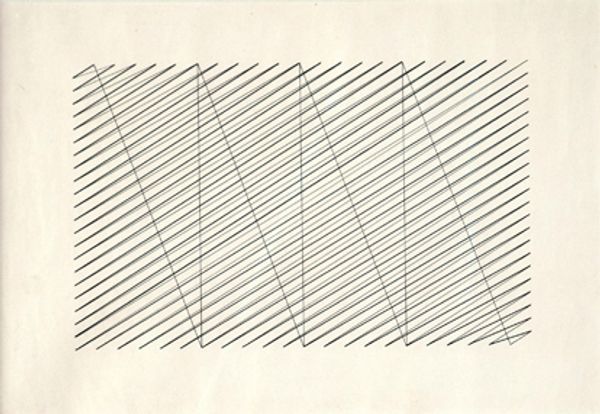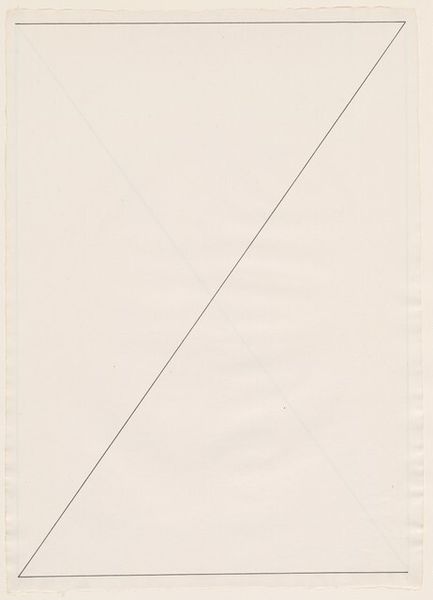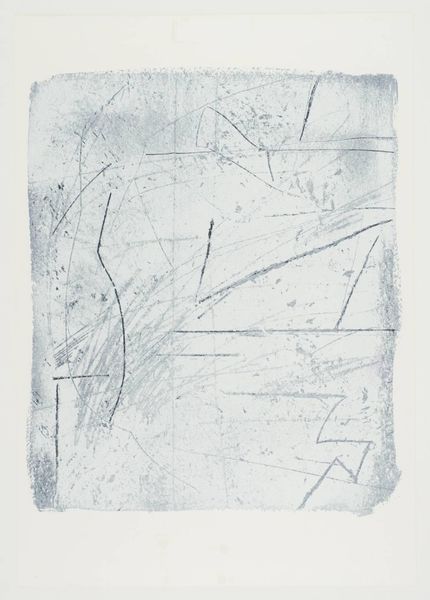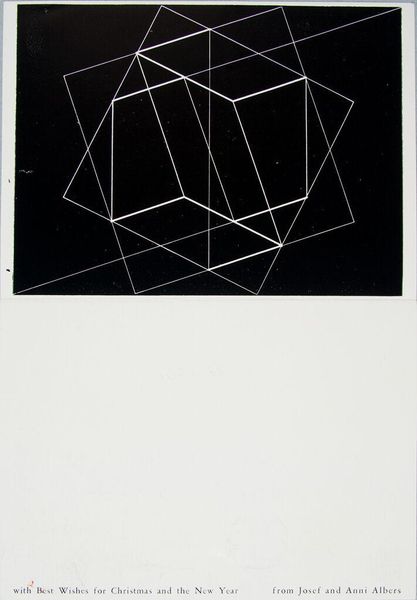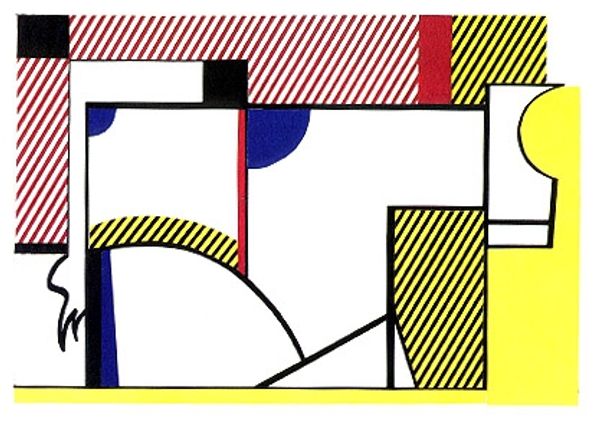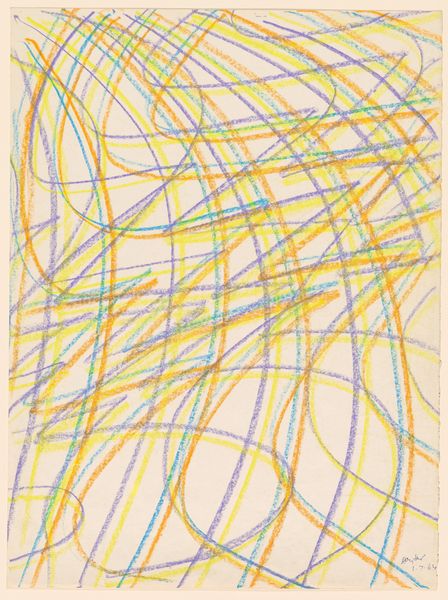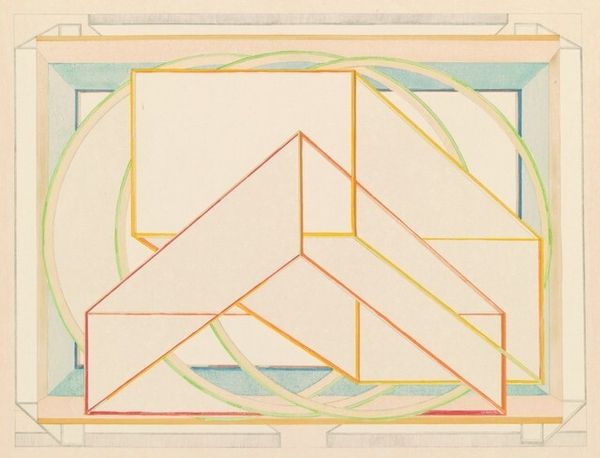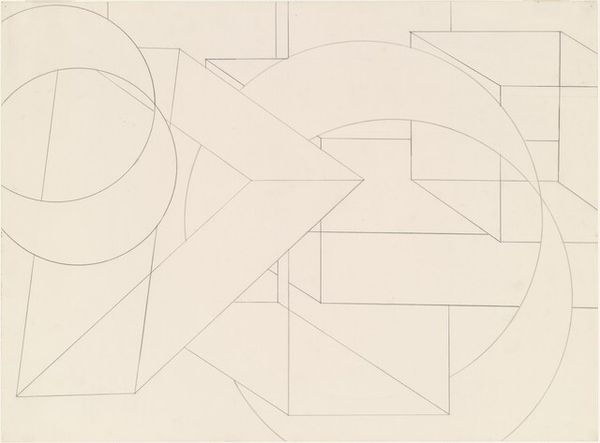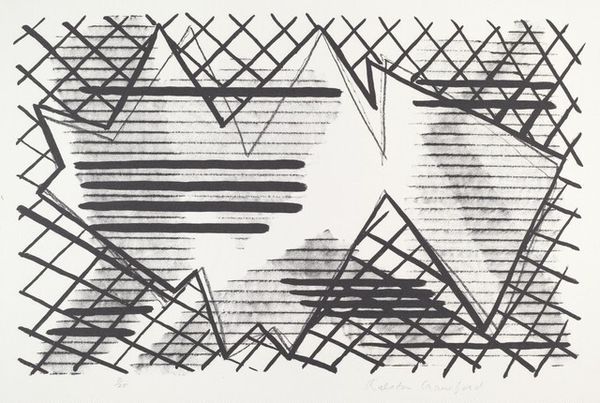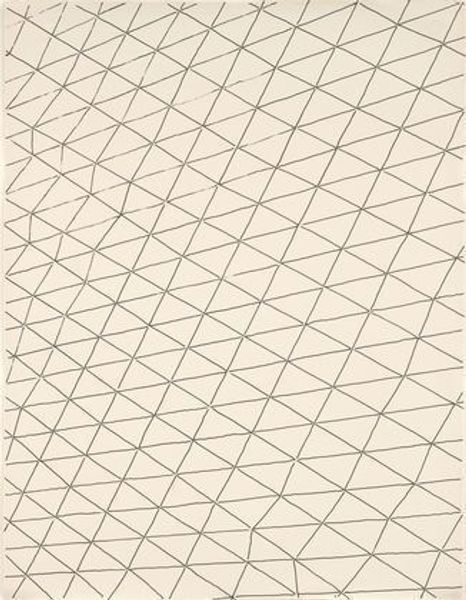
drawing, graphite
#
abstract-expressionism
#
drawing
#
non-objective-art
#
constructivism
#
form
#
geometric-abstraction
#
line
#
graphite
Copyright: Alexander Rodchenko,Fair Use
Editor: So this drawing is called "Construction," made with graphite, by Alexander Rodchenko. At first glance, I see overlapping geometric forms. They give the sense of almost organized chaos. What can you tell me about it? Curator: It's a compelling example of Constructivism, which emerged in Russia around 1915, deeply embedded in the socio-political landscape of the time. What’s fascinating to me is that these seemingly simple geometric lines served as a powerful form of visual communication. Editor: Communication? How so? It looks abstract to me. Curator: Well, let's think about the cultural context. Following the Russian Revolution, artists sought to reject traditional bourgeois art and embrace abstraction as a universal visual language that mirrored the industrial age. The geometric forms symbolized progress, technology, and a move away from representational art. This piece functioned, in many ways, as propaganda. Editor: Propaganda? The piece uses relatively basic lines though. Is that just because of limited availability of artistic tools, like color paints and more? Curator: Not necessarily, although the simplification could partially be attributed to a utilitarian, practical approach aligning with the values of the Soviet regime which eschewed anything elaborate. Remember, it’s all about communicating shared values of collectivism, industrialism and a bright, geometric future. These abstract shapes transcended individual interpretation. It’s interesting to view this “Construction” as an endorsement for that very ideology, even through abstraction. Editor: It's amazing how the historical background and context really shape our understanding of art. What initially appeared like simple, intersecting shapes has a deeper layer to it. I would have definitely missed this entirely. Curator: Exactly. The socio-political environment dramatically affects artistic production, so examining the context of any artwork will significantly transform its interpretation and artistic weight.
Comments
No comments
Be the first to comment and join the conversation on the ultimate creative platform.
